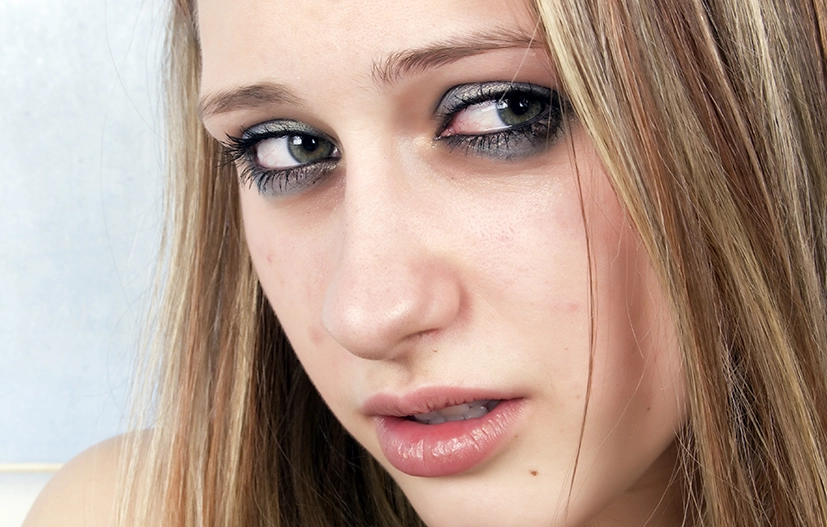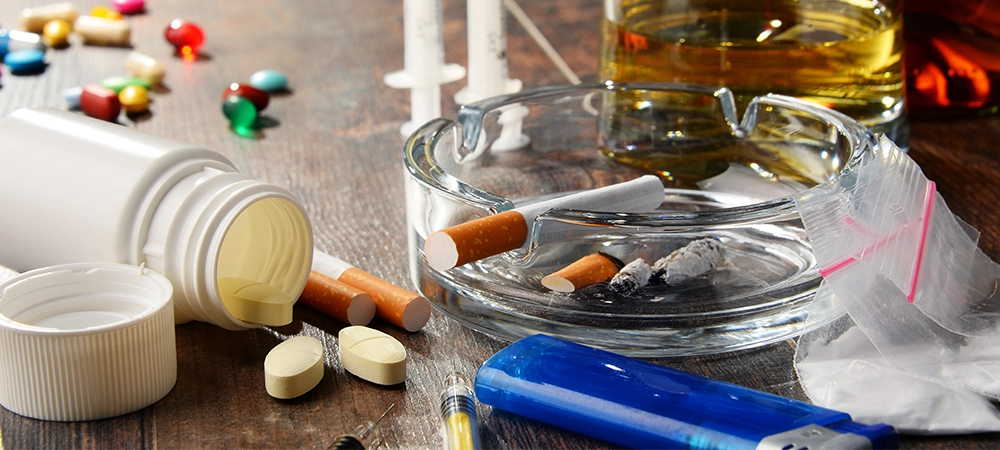
What is Addiction?
“Addiction” is a word that gets thrown around a lot. Many people make light of it and say they’re “addicted” to the TV, their favourite video game, or a guilty pleasure food. In many cases, these are not true addictions and more so just a matter of someone loving something and regularly indulging in it. But, their consumption of said thing is under control and not significantly affecting their life.
True addiction is much more than regularly enjoying or engaging in something. True addiction is a disease of the mind and it’s extremely detrimental to those that fall into its grip. Addiction quickly spirals out of control and sufferers find themselves behaving strangely, losing themselves, and making too many sacrifices.
Much of the time, addiction requires intervention, therapy, and a strong will to overcome and recover from.
What is Addiction?
Addiction is described by Medical News Today as “an inability to stop using a substance or engaging in a behaviour even though it may cause psychological or physical harm.” This can apply to any number of substances as well as behavours or actions. These two are starkly different in practice but have similar repercussions.
Descriptive as it is, this is a simple addiction definition for a highly nuanced problem. Understanding addiction requires a compassionate and open mind. Many are familiar with what addiction is and what it can do to a person, but where does it come from?
What Causes Addiction?
Addiction is a complex condition and there is no one thing we can pinpoint that causes it. Much of it has to do with your brain chemistry and how it changes based on certain activities. Certain activities and substances have significant effects on your brain – particularly the reward center.
We are all biologically inclined to seek “rewards.” For example, if you go to a fun event or eat some delicious food, your body produces dopamine. This is a natural chemical that makes you feel good and it’s not inherently bad. If certain foods, events, or even people give you lots of dopamine, you’ll seek these things out to experience good feelings.
Unfortunately, illegal and unhealthy substances can have the same effect. Many drugs produce large amounts of dopamine, which gives you an incredible feeling of joy, euphoria, escape, etc – though it’s always short-lived. Many drugs have additional side effects that are less pleasant, but the reward center in your brain becomes too focused on the massive dopamine hit.
Before you know it, you’re chasing the feelings and the “highs” and you slowly become less and less concerned with the consequences. This is how addiction sets in.
The cycle continues when you start building up tolerance. Eventually, you’ll start needing more of the particular substance or behaviour to get the same result. It can happen to anyone, but several factors can leave certain people more vulnerable than others:
- Genetics. Everyone has unique genes and that includes the makeup of your brain. Some people are simply more predisposed to falling into addiction than others. Some studies show that genetics may make a person 40-60% more vulnerable to addiction. If a direct relative suffers from a substance abuse disorder, there’s a higher chance you will, too.
- The amount of access you have to substances will play a role in your likelihood of becoming addicted. For example, if your friend sells them or a family member uses them, you’re around them frequently. Adverse childhood experiences are also a factor. For example, those who were traumatized and/or abused as children may be more vulnerable to developing an addiction.
- Mental health. Mental illnesses are a common co-occurring condition in those that suffer from addiction. Things like depression, bipolar, and PTSD are shown to increase the likelihood of someone falling into addiction.

Types of Addiction
There are two main types of addiction – substance and behaviour. Substance addiction covers everything from alcohol to all kinds of drugs. Behavioural addictions are when someone becomes addicted to an action or behaviour in the same way as they would a substance.
Common behavioural addictions include gambling, sex, and shopping, but can be many things. These behaviours produce a dopamine hit just like a drug or drink, and this also stimulates the reward center of the brain.
Substance Addiction
Substance addiction, also known as substance abuse disorder comes in many forms. You can develop an addiction to all kinds of substances, both legal and illegal. There are some things, like coffee and sugar, that are okay in moderation but still addictive.
While the world of substances is vast, most can be put into four categories: depressants, stimulants, psychotherapeutics, and psychedelics. Each of these has different symptoms, risks, and results, but all are potentially addictive.
Central Nervous System Depressants
Central nervous system (CNS) depressants are substances that slow down brain activity. They do so by affecting something called the neurotransmitter gamma-aminobutyric acid (GABA) which can cause relaxation, drowsiness, and slowed inhibition.
When used properly and according to a doctor’s recommendation, many of these drugs are effective at treating various conditions, such as:
- Anxiety
- Sleep disorders
- Pain
- Seizures
- Insomnia
- And more
There are a few different types of substances that are considered CNS depressants, many of which are legal and some that aren’t. That being said, it’s important to note that many of the legal ones are only legal with a prescription from a medical professional.
CNS depressants include:
- Alcohol
- Benzodiazepines
- Barbiturates
- Opioids
- Many sleeping pills
- Hypnotics
- Tranquilizers
Different types of depressants work in different ways, but they all reduce activity in the brain and therefore lower your level of awareness. This is why many come with advisories not to drive or operate any machinery while on them.

Signs and Symptoms of Depressant Abuse
Many become addicted to CSN depressants after having them prescribed for a medical issue. Others obtain them through friends, family, or other illegal means. Either way, what starts as casual use can quickly become an addiction.
Sometimes, you may not even realize you’re becoming dependent. The following are some signs and symptoms of a brewing depressants addiction:
- Acting secretive around family and friends
- Mood swings
- Decreased social activity
- Lack of energy or motivation
- Withdrawal symptoms when not using the drugs
- Feelings of apathy or depression
- Failed attempts to stop using
Dangers of Depressants
Even when prescribed and recommended by a doctor, depressants have several risks and side effects. This is a chance you take when you decide to take the drugs. However, frequent and prolonged use such as that with addiction can pose additional health concerns:
- Depression
- Suicidal thoughts
- Sexual dysfunction
- Breathing difficulties
- Weight gain
Another huge risk with depressant dependence is withdrawal. Just as using the drug has risks, withdrawal symptoms come with real risks as well. Withdrawal from depressants can include:
- Restlessness
- Shaking
- Tremors
- Nausea
- Vomiting
- Weakness
- Hallucinations
- Excessive sweating
- Panic attacks
- Anxiety
- Body aches and pains
- Increased blood pressure
- Memory issues
- Muscle stiffness
- Seizures
- Depression
- Stress
- And more
Some of these are more manageable than others, but some may require medical intervention if they get bad enough.
Stimulants
Essentially the opposite of depressants, stimulants are substances that increase the activity of your central nervous system. They can provide a boost of energy and/or temporary mental sharpness. In the past, they’ve been used to treat conditions such as asthma, obesity, neurological disorders, and more. This was before their highly addictive nature became clear.
Now, they are prescribed only for a few serious conditions such as narcolepsy, ADHD, etc. They are known as “study drugs” since many high school and college students seek them out. They’re known to help you stay awake and focused longer, especially when trying to cram for something important.
Common stimulants include:
- Adderall
- Ritalin
- Concerta
- Vyvanse
- ProCentra
Signs and Symptoms of Stimulant Abuse:
There are several tell-tale signs that you or a loved one may be on the road to a stimulant addiction. Keep an eye out for the following signs and symptoms:
- Deceptive and suspicious behaviour
- Angry or aggressive outbursts
- Risky and impulsive behaviour
- Significant changes in appetite – usually a decrease
- Weight loss
- Hair loss
- Sweating
- Increased blood pressure
- Quickened heartbeat
- Jitters and twitches
- Hyperfocus
- Poor judgment
- Depression
- Anxiety
- Mood swings
- Hallucinations
- Paranoia
- Confusion
- Racing thoughts

Dangers of Stimulant Abuse
While stimulants come with risks even when taken properly and legally, these risks and problems are heightened if you start overusing and abusing the drugs. Some of the more serious implications include:
- Damage to your kidney, liver, lungs, and cardiovascular system
- Gastrointestinal problems
- Issues with memory, attention span, concentration, and focus
- Erratic behaviour
- Seizures
Additionally, stimulants come with many less-than-pleasant withdrawal symptoms. These start setting in once you stop taking the drugs and they can be potentially dangerous. The safest place to detox is in a monitored environment with access to medical professionals.
Stimulant withdrawal symptoms include:
- Intense cravings
- Irritability
- Angry outbursts
- Lethargy, fatigue, exhaustion
- Delusions and hallucinations
- Paranoia
- Dehydration
- Insomnia
- Musculoskeletal pain
Psychedelics
Psychedelics are a class of drugs that are, usually, taken to intentionally induce hallucinations and go on mental “trips.” Many people do this recreationally, although it’s mostly illegal, and not everyone gets addicted.
However, the effects are such that some people find themselves going back more and more until an addiction takes hold. The exact effects can vary from person to person, but they tend to include some or all of the following:
- Visual hallucinations
- Feelings of bliss and euphoria
- “Mystical” experiences
- Altered cognition, such as introspection, a changed perception of time, and increased self-consciousness
These things are often enjoyed in the moment, but the risks, side effects, and other implications aren’t worth it.
Common psychedelics include:
- LSD
- PCP
- Ketamine
- Ecstasy
- GHB
- Salvia
Signs and Symptoms of Psychedelic Drug Abuse
Psychedelics, also known as hallucinogens, can cause a wide range of symptoms. They’ll vary based on things like the personality of the user, the dose they took, and the specific drug. But typically, signs and symptoms of psychedelic abuse include:
- Increased heart rates
- Sleeping problems
- Heightened emotions and senses
- Nausea
- Decreased appetite
- High blood pressure
- Mood swings
- Depression
- Lethargy
- Feeling detached from life
Dangers of Psychedelics
Like any drug, psychedelics have their physical risks, but just as concerning is the effect on your mind. These drugs are made to drastically alter the mind, and excessive use can result in lasting or permanent damage.
Firstly, you take a risk every time you do the drugs. Most users are familiar with “bad trips” which refers to when a session doesn’t go as planned. These events come with their own risks:
- Dysphoria
- Intense fear
- Paranoia
- Scary illusions and hallucinations
- Troubling and dangerous thoughts
While these things are terrible to experience, they can also lead to poor choices and dangerous actions. Too many bad trips and excessive use and you may find things like fear and paranoia sticking around even when you’re sober.
Additional risks come with taking too high of a dose, which may start happening as you build a tolerance. These risks include:
- Accumulation of platelets
- Thrombus formation – blood clotting inside a blood vessel
- Coronary artery spasms – this can increase your risk of a heart attack
Psychotherapeutics
The last of the four main categories are psychotherapeutics. These drugs are prescribed to help manage mental health disorders such as depression, anxiety, bipolar, and more. Perhaps the most commonly known drug in this category is antidepressants.
Antidepressants are primarily used for treating depression but are also common for anxiety disorders. There are also specific anti-anxiety medications, as well as antipsychotics, to name a few more types.
These drugs aren’t often considered terribly addictive, but that doesn’t mean you can’t become dependent on them. They don’t provide a rush of dopamine or a euphoric high that many other drugs do. The addiction often stems from avoiding the withdrawal symptoms that come with abruptly stopping them.
While antidepressants and other mental health drugs drastically improve life for many people, there are still risks for those who overuse, misuse, and abuse.
Risks associated with excessive use or overdose include:
- Impaired coordination
- Fainting
- Confusion
- Dizziness
- Shaking uncontrollably
- Convulsions
- Irregular heartbeat

Behavioural Addiction
Behavioural addiction differs from drug addiction and alcohol addiction in that there are no substances involved, but the level of addiction is just as intense. Certain actions and behaviours produce a rush of happiness and dopamine and generally make us feel good. Most behaviours are fine and even healthy when practiced normally and in proper moderation.
However, it’s also possible to become addicted to these things just as you would drugs. Some of the most common behavioural addictions include:
- Gambling addiction
- Sex addiction
- Shopping addiction
- Porn addiction
- Video game addiction
- Internet addiction
- Food addiction
- Exercise addiction
- Work addiction
Signs and Symptoms of Behavioural Addiction
Because many of these behaviours are generally accepted as part of life and are normal for most, detecting an addiction can be hard. You may suspect you’re struggling yourself, or perhaps you’re worried about a loved one.
If so, you can look for the following signs that an addiction may be at play:
- Spending the majority of your time engaging in the behaviour, thinking about it, panning for it, or recovering from it
- Continuing to do it despite mental and/or physical harm
- Depending on the behaviour to feel normal or to cope with emotions or hard situations
- Neglecting school, work, and social activities in favour of the behaviour
- Experiencing withdrawal symptoms when you stop the behaviour for any amount of time
- Downplaying or minimizing your engagement in the behaviour and its escalation to being a problem
Dangers of Behavioural Addictions
Although behavioural addictions don’t have the physical implications that come with excessive use of a harmful substance, they can still wreak havoc on your life. Many of the following side effects are likely to occur:
- It can add great amounts of distress to your life
- It can cause strain and even the breaking apart of important relationships in your life
- It can leave lasting effects on your children
- It can cause significant money problems, even causing you to lose assets such as cars or houses
- It can lead to mental health problems like anxiety and depression
Although these addictions may be considered less dangerous than a substance abuse disorder, you’re still entitled to proper treatment. Like substance addiction, things like cognitive behavioural therapy, group therapy, and various medications can help you recover.
At Lily Recovery, we treat behavioural addictions with the same level of commitment and respect as we do drug or alcohol addictions.

Recover From Addiction at Lily Recovery
Addiction is a devastating and debilitating disease with a long road to recovery. But, we believe that anyone can do it and there’s a place for all women here at our rehab center. We offer a quiet and comfortable place to receive thorough and comprehensive treatment.
We offer individual therapy, group therapy, holistic care, and much more. Our program accepts only ten women at a time and we’re staffed by only women as well. Contact us today to learn more and ask your questions. Our staff is here to help and we’ll offer as much support and guidance as we can.



